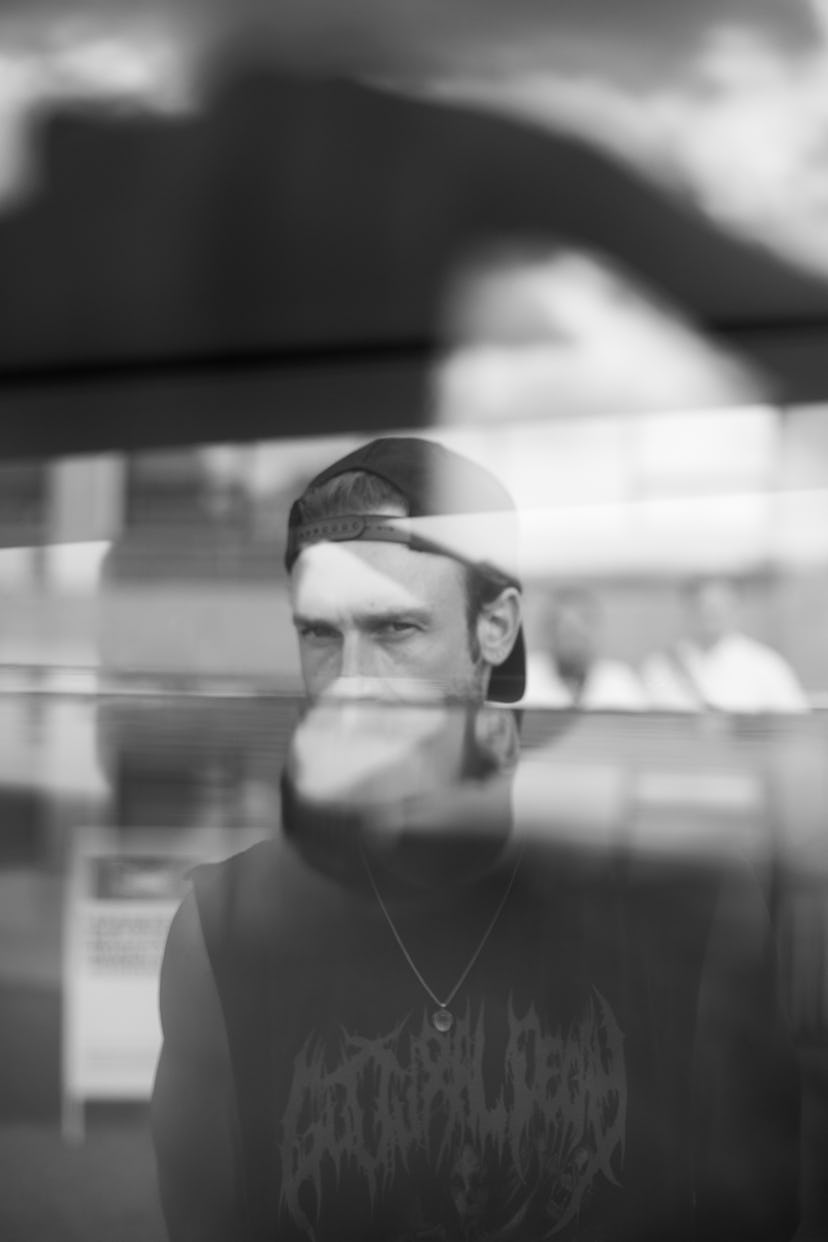The Personal History Behind Artist Max Hooper Schneider’s High Line Aquarium

“I’ve always loved non-charismatic flora and fauna,” the artist Max Hooper Schneider said recently as he described his lifelong obsession with aquariums. Schneider, a rising art star who lives in Los Angeles, stocked his boyhood home with them. But not for him the shimmering goldfish and coral reefs that serve as eye candy for others; his vitrines held freshwater electric eels, frogs that laid splat-out flat, and turtles whose soft shells resembled “sodden leather,” he recalled. “I wanted things that were blind, lived in the mud, and had very degenerate eyes.”
In person, Hooper Schneider, 34, is warm and witty with a sunny disposition that might seem at odds with the dark, primordial worlds he constructs. Out of the “hellscapes” and dystopian aspects of contemporary life he makes sculptures, installations, and otherworldly habitats suspended between the natural and artificial, the living and the dead. His interest lies in the transformation of living matter—what he calls the “generative capacities that can come out of dystopia.” You might say he’s the ideal artist for these times.
Hooper Schneider’s *Section of Intertidal landscape—Hair Metastisis*.
He’s placed live leeches in a glass case with a porcelain wedding cake, filled a vintage popcorn cart with live snails, and concocted an eco-system-inspired slot machine with sound-reactive LED lights. For works seen during Art Basel Miami Beach in 2016, at the Rubell Family Collection and at the fair, Hooper Schneider incorporated insect and animal matter, neon signs, and even heavy-metal cassette tapes.
For his latest commission, as part of “Mutations,” a group exhibition that recently opened on the High Line in New York, the artist has constructed a 10-foot-long marine diorama in a vitrine. When seen from afar, it suggests stained glass and an undulating bed of sea grass. But the sea grass is actually made of natural and synthetic human hair, and the stained glass is the artist’s version of an intertidal landfill, or what he calls “a “slurry of something lapped up on the west side of Los Angeles.” Cast in resin, it’s comprised of more or less everything imaginable—bird feathers, French fries, minerals, gems, and “really gnarly things, “ he said, “like worms, a sheep embryo, and every kind of fruit and vegetable freeze dried. It’s almost an archeology of our present.” He added, “It allows us to imagine a possibility of some other time—with or without us.”
Hooper Schneider, who was wearing a vintage Obituary band tee (“Slowly We Rot,” it read) travels frequently to New Mexico to visit his mother, a retired theoretician, and had just bought a used Toyota “because it has a cassette player so I can play all my ’90s tapes.” His late father was an equine veterinarian, and Hooper Schneider studied biology at NYU before pursuing a master’s degree in landscape architecture at Harvard. He had considered art school, but Harvard gave him a lab-turned-atelier and access to MIT. “I could call up and say, ‘I need solid smoke samples!’”
Hooper Schneider on the High Line.
His jobs have been as unlikely as his art: As a young teen, he interned after school in the studio of Ren and Stimpy creator John Kricfalusi, perfecting the art of rendering fat folds. During summers as an aquarium technician, he scrubbed algae off coral reef tanks in Beverly Hills, where ex-trophy wives “slammed oxycontin watching this teenage boy work,” he said. “It was super Bret Easton Ellis.” After college, he became the aquarium overseer at the French artist Pierre Hyughe’s New York studio before heading out on his own.
Like much of his output, Section of Intertidal landscape—Hair Metastisis, Hooper Schneider’s new piece at the High Line, contains autobiographical remnants, such as bric-a-brac from his father’s equestrian practice and his own boyhood necklaces.
But now that he has his own art career, he no longer keeps a menagerie. “It got to a point that I was more interested in the artificial habitat than the specimen itself,” he said. “And anyway, I get it out through the work.” The extended process of assembling it all gives him “tremendous” pleasure. Plus, he added, “there’s the satisfaction of making the untouchable somehow touchable.”
See what’s trending on W video: